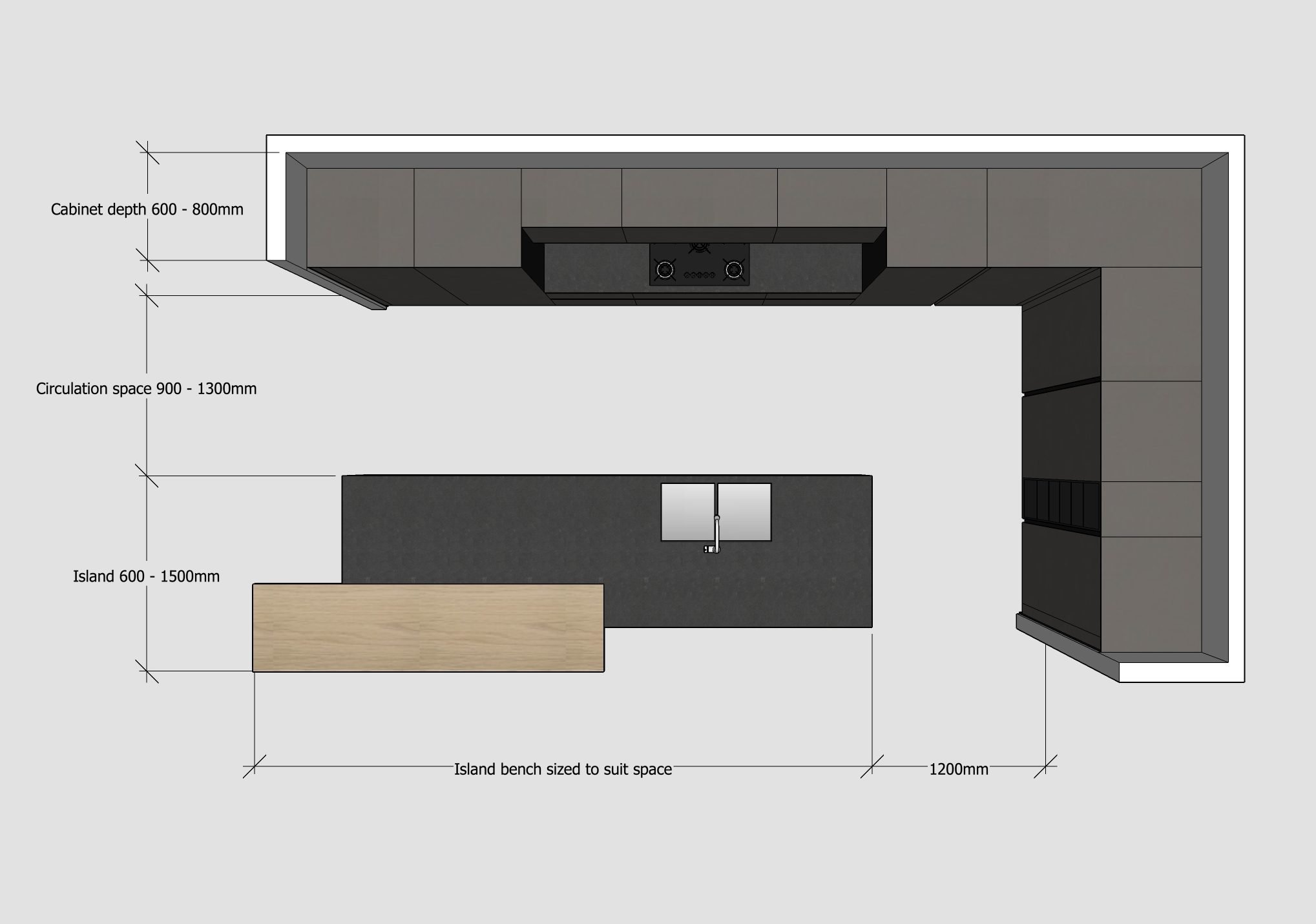Kitchen & Bathroom Design Standards
Design standards are a common topic of conversation when planning a kitchen or bathroom. Typically, the standard measurements of cabinetry and fittings are determined in discussion between client & designer and in accordance with the Australian Standards. However, measurements can largely depend on the individual and how they wish to utilise the space.
Below we have compiled a list of Retreat Design’s standard measurements for you to consider for your next renovation.
Kitchen
Kitchen Bench: The recommended standard bench top height is between 900mm – 960mm in height. Overall working height is then customised by adjusting the height of the kick board and the thickness of the bench top. Your cabinets (Including kick board) will normally be 900mm from the floor and stone approximately 20mm thick, taking you to a comfortable working height of 920mm.
Rangehood & Overhead Cabinetry: In a standard kitchen, range hoods and overhead cabinets sit 650mm – 750mm above bench height.
Always check the manufacturer’s installation instructions as some range hoods will specify a height above the cook top.
Circulation Space: Circulation space is a huge consideration when planning a workable kitchen layout. Cabinet doors, drawers and appliance doors all encroach on the walkways and can reduce circulation space. Whether it is a U-shape, galley or island bench kitchen we ensure there is a minimum of 900mm – 1300mm walking space. The time-honoured ‘kitchen triangle’ principle is also used for designing ergonomic, functional kitchens. This takes into account the three working areas of the kitchen:
-The place where you clean and prepare (the sink)
-The place where you’re likely to store food (the fridge), and
-The place where you cook (the stove top).
Alternatively, ‘Dynamic Space’ is a different concept coined by Blum and is more prevalent in today’s kitchen planning. It is based on FIVE different work zones within the kitchen which allows for good ergonomics and work flow. Basically, every kitchen can be divided into five work zones – regardless of size or shape. For right-handed people, the consumables, non-consumables, cleaning, preparation and cooking zones are arranged clockwise. If you’re left-handed, it’s the other way around.
Bathroom
Shower Space: Ideally, the shower footprint is a minimum size of 900mm x 900mmW for a comfortable space. Alternatively, 1200mm x 900mm is sufficient for a glass shower blade space (no door).
Shower Head Height: Again, this is agreed upon in consultation with the client however we usually set the shower head at between 2000mmH and 2300mmH. This also depends on the shower head fixture and is set as high as possible in the case of rain shower fittings to give a waterfall effect.
Accessories Height: Towel rails are generally 1050-1100mmH, hooks at 1800mmH and toilet roll holders at 800-900mmH.
Tapware Height: The standard height for wall mounted basin mixers and a shower mixer is 1050mmH.
Vanity Bench Height: Bathroom bench height is at a standard 875-900mmH. If you have a top mounted bowl, subtract the height of the basin to determine your vanity height. So this means if you have a 100mmH top mounted sink bowl, the bench height would be approx 775mmH.
Mirror Height: This is dependent on the size and style of mirror, however we would normally set the top of the mirror at between 2100 – 2400mmH (taking into account the ceiling height and the clients line of vision).
Retreat Design prides itself on the design consultation service we provide and we work hard to translate the clients’ wishes into our designs. The above mentioned standards are a guide only and we can advise you on how best to design your space to suit your individual needs.

